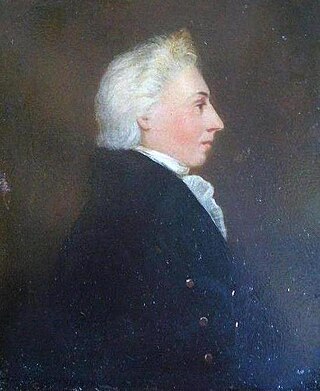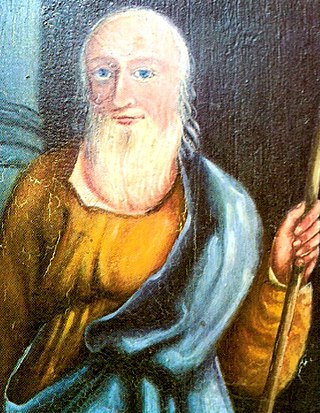
Recusancy was the state of those who remained loyal to the Catholic Church and refused to attend Church of England services after the English Reformation.

William Allen, also known as Guilielmus Alanus or Gulielmus Alanus, was an English Cardinal of the Roman Catholic Church. He was an ordained priest, but was never a bishop. His main role was setting up colleges to train English missionary priests with the mission of returning secretly to England to keep Roman Catholicism alive there. Allen assisted in the planning of the Spanish Armada's attempted invasion of England in 1588. It failed badly, but if it had succeeded he would probably have been made Archbishop of Canterbury and Lord Chancellor. The Douai-Rheims Bible, a complete translation into English from Latin, was printed under Allen's orders. His activities were part of the Counter Reformation, but they led to an intense response in England and in Ireland. He advised and recommended Pope Pius V to pronounce Elizabeth I deposed. After the Pope declared her excommunicated and deposed, Elizabeth intensified the persecution of her Roman Catholic religious opponents.

Ushaw College, is a former Catholic seminary near the village of Ushaw Moor, County Durham, England, which is now a heritage and cultural tourist attraction. The college is known for its Georgian and Victorian Gothic architecture and listed nineteenth-century chapels. The college now hosts a programme of art exhibitions, music and theatre events, alongside tearooms and a café.

A priest hole is a hiding place for a priest built into many of the principal Catholic houses of England, Wales and Ireland during the period when Catholics were persecuted by law. When Queen Elizabeth I came to the throne in 1558, there were several Catholic plots designed to remove her and severe measures were taken against Catholic priests. Many great houses had a priest hole built so that the presence of a priest could be concealed when searches were made of the building. They were concealed in walls, under floors, behind wainscoting and other locations and were often successful in concealing their occupant.

Richard Challoner was a leading figure of English Catholicism during the greater part of the 18th century, and the titular Bishop of Doberus. In 1738, he published a revision of the Douay–Rheims translation of the Bible.
The English College was a Catholic seminary in Douai, France, associated with the University of Douai. It was established in 1568, and was suppressed in 1793. It is known for a Bible translation referred to as the Douay–Rheims Bible. Of over 300 priests from Douai sent on the English mission, about one-third were executed. The dissolution of the college at the time of the French Revolution led to the founding of Crook Hall near Lanchester in County Durham, and St Edmund's College, Ware. It is popularly believed that the indemnification funds paid by the French for the seizure of Douai's property were diverted by the British commissioners to complete the furnishings of George IV's Royal Pavilion at Brighton.
Hugh Tootell was an English Catholic historian. He is commonly known under his pseudonym Charles Dodd.

George Leo Haydock (1774–1849) was a priest, pastor and Bible scholar from an ancient English Catholic Recusant family. His edition of the Douay Bible with extended commentary, originally published in 1811, became the most popular English Catholic Bible of the 19th century on both sides of the Atlantic. It remains in print and is still regarded for its apologetic value.
Father Richard Holtby was an English Jesuit Superior and Roman Catholic priest.

Ugthorpe is a village and civil parish in the Scarborough borough, situated near Whitby, North Yorkshire, England. According to the 2011 UK census, Ugthorpe parish had a population of 225, an increase on the 2001 UK census figure of 201.
Thomas Haydock (1772–1859), born of one of the oldest English Catholic Recusant families, was a schoolmaster and publisher. His dedication to making religious books available to fellow Catholics suffering under the English Penal Laws came at great personal cost. He is best remembered for publishing an edition of the Douay Bible with extended commentary, compiled chiefly by his brother George Leo Haydock. Originally published in 1811 and still in print, it is one of the most enduring contributions to Catholic biblical studies.
A priest hunter was a person who, acting on behalf of the English and later British government, spied on or captured Catholic priests during Penal Times. Priest hunters were effectively bounty hunters. Some were volunteers, experienced soldiers or former spies.

The Eighty-five Martyrs of England and Wales, also known as George Haydock and Eighty-four Companion Martyrs, are a group of men who were executed on charges of treason and related offences in the Kingdom of England between 1584 and 1679. Of the eighty-five, seventy-five were executed under Jesuits, etc. Act 1584.

Eskdaleside cum Ugglebarnby is a civil parish in the Scarborough district of North Yorkshire, England, comprising the two villages of Sleights and Ugglebarnby.

Nicholas Postgate was an English Catholic priest who was executed for treason on the Knavesmire in York on 6 August 1679 as part of the anti-Catholic persecution that was sweeping England at that time. He is one of the 85 English Catholic Martyrs of England and Wales beatified by Pope John Paul II in November 1987.

George Haydock was an English Roman Catholic priest. He is a Catholic martyr, beatified in 1987. He is not to be confused with his relative, also a priest, George Leo Haydock (1774–1849).
Joseph Gillow was an English Roman Catholic antiquary, historian and bio-bibliographer, "the Plutarch of the English Catholics".
John Sanderson was an English Roman Catholic priest, known as a writer on logic.
James Haydock (1764?–1809) was a Catholic recusant priest who served during the waning years of the Penal Period in England and died a martyr to charity while attending the sick of his congregation during an epidemic.
Margaret Haydock was a Roman Catholic nun and teacher, whose life exemplified the plight of English Catholic nuns in exile on the Continent during the French Revolution.










